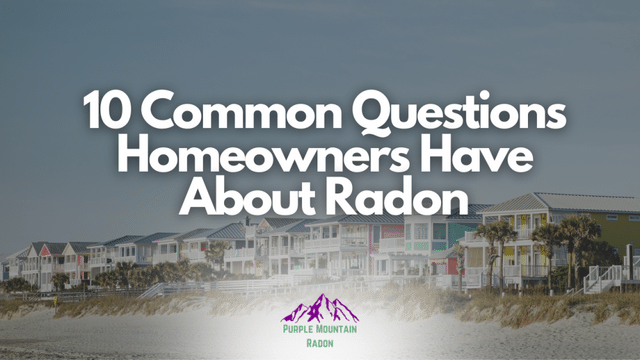Unmasking the Invisible Threat: Top 10 Radon Questions Homeowners Ask

Radon. It's a word that might not be on your daily radar, but it should be. This silent, invisible gas poses a significant health risk, and understanding it is crucial for every homeowner. Today, we're diving into the top 10 questions homeowners ask about radon, arming you with the knowledge to safeguard your family.
The Invisible Enemy: What You Need to Know
Radon is a naturally occurring radioactive gas, born from the decay of uranium in soil, rock, and water. It's odorless, colorless, and tasteless, making it a stealthy intruder in our homes. According to the EPA, this unseen threat is a leading cause of lung cancer among non-smokers. Scary, right? Let's break down the most common questions to demystify radon.
1. What is Radon?
As mentioned, radon is a radioactive gas that forms naturally. It's everywhere, but the levels within your home are what matter.
2. How Does Radon Enter a Home?
Think of your home's foundation as a sieve. Radon seeps through cracks, construction joints, gaps around pipes, and even through well water. Poor ventilation and high radon levels in your area exacerbate the risk.
3. How Do I Test for Radon?
Easy! You can purchase a DIY radon test kit or hire a professional. The EPA's guide to radon testing is a fantastic resource.
4. What is Considered a High Radon Level?
The EPA recommends action if levels exceed 4 pCi/L (picocuries per liter of air). Even levels between 2-4 pCi/L are worth considering for mitigation.
5. What Are the Risks of High Radon Levels?
Lung cancer. The EPA estimates about 21,000 lung cancer deaths annually in the U.S. are linked to radon. Smokers face an even higher risk.
6. How Can I Mitigate Radon in My Home?
Professional radon mitigation systems, often involving venting radon from beneath the house, are highly effective. Check out the National Radon Program Services for more info.
7. What Are the Symptoms of Radon Exposure?
There are no immediate symptoms. The risk is long-term, increasing the likelihood of lung cancer over time. Regular testing is your best defense.
8. Can New Homes Be Built Radon-Resistant?
Absolutely! Modern construction can include features like vent pipes and plastic sheeting. The EPA's guide on radon-resistant construction is invaluable.
9. Is Radon a Problem Everywhere?
Radon levels vary, but no area is completely safe. Check your state's radon map via the EPA’s State Radon Contact Directory.
10. What Should I Do if My Home Has High Radon Levels?
Contact a certified radon mitigation professional immediately. The National Radon Proficiency Program can help you find qualified contractors.
Protecting Your Home and Family
Radon is a serious concern, but you can take control. Regular testing, mitigation, and staying informed are key. Don't let this invisible threat linger. Take action to ensure your home is a safe haven.
Stay informed and proactive!


